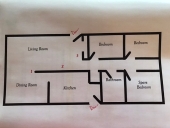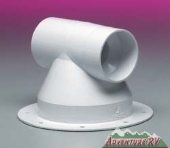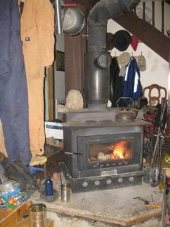posted 13 years ago
Dave Marth - most likely an 8" rocket mass heater would do the trick. Not sure about a 6".
Little-known secret for those with an existing 6" chimney:
You can build a 7" system and taper gently to a 6" exit if you do it after about 20 feet on into the heat-exchange area. The exhaust is cooling and condensing by this time, and can flow through a smaller space. We don't usually go into this on first-time builds, as people get ambitious and screw up other flow areas that should be preserved intact.
(This is for solid mass heaters, not sure about the 'loose rock' variety which I don't endorse indoors, see below.)
I have a couple concerns with any basement build:
- is this basement a place where you spend time, like a rec room or home office? Unattended solid-fuel heaters aren't a great idea, and if nobody is in the basement you lose the conductive heat benefit which is a factor in the RMH's efficiency. You will be burning more wood than someone who can sit on their heater. These are not a 'light it and leave it' device, though they are relatively low-maintenance if you are just hanging out in the same room and doing other things.
- make sure there is not a negative pressure situation with the home drawing hot air out the roof vents, and making any basement opening into an air intake. Using an existing tall, warm, indoor chimney rather than a side vent is likely a very good idea for a basement installation.
- non-permanent thermal mass like rock:
Non-permanent is fine. Non-sealed is not such a good idea. We rely on cob as a secondary seal around the ductwork, to make sure no smoke or exhaust can escape into the room, AND to ensure that in the event of a creosote problem, there would be no adverse effects from a (improbable) chimney fire in the horizontal flues.
Cob is also non-permanent; one option would be to cob directly around the pipes for a seal / better heat conductivity, and then dry-stack the remaining rock or brick to make it much easier to remove later.
Brick with lime mortars is also easy to remove again (though caustic when fresh), and offers a decent secondary seal in the low-temp bench area.
You can do a secondary seal some other way - stove cement or foil tape around the joints, for example. Just be sure it's good and sealed, and if any pipe is exposed to room air consider stovepipe in that area, not galv. ducting.
Yours,
Erica W








































